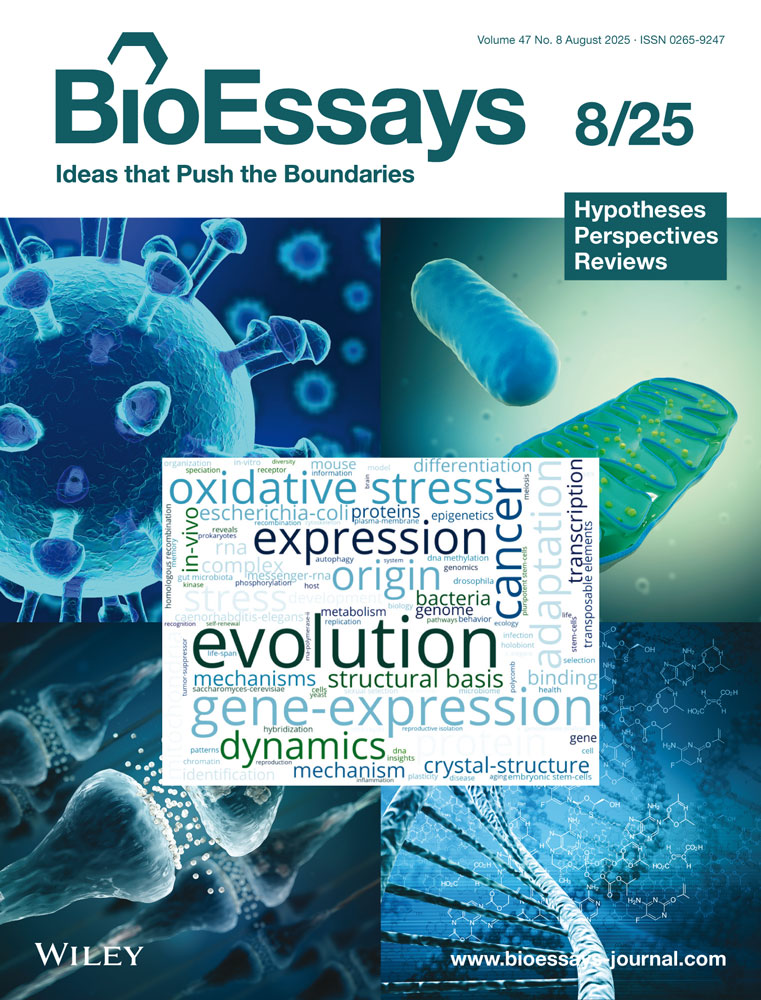Signalling to p53: where does it all start?
Michael B. Kastan
Johns Hopkins University, 720 Rutland Avenue, Ross 345, Baltimore, MD 21205, USA.
Search for more papers by this authorMichael B. Kastan
Johns Hopkins University, 720 Rutland Avenue, Ross 345, Baltimore, MD 21205, USA.
Search for more papers by this authorAbstract
Alterations in the p53 gene product appear to be a major factor in human tumorigenesis and may influence the responses of many human tumors to therapy. Much effort has focused on understanding the signals which normally initiate p53 growth-suppressive functions. Though it has been known that DNA damage can induce p53, a recent publication reports data which suggest that p53 can be induced by depletion of ribonucleotide pools, even in the absence of detectable DNA damage(1). These observations provide new ideas about how cells utilize the p53 signal and open up new avenues of investigation for manipulating p53 function.
References
- 1 Linke, S. P., Clarkin, K. C., DiLeonardo, A., Tsou, A. and Wahl, G. M. (1996). A reversible, p53-dependent Go/Gl cell cycle arrest induced by ribonucleotide depletion in the absence of detectable DNA damage. Genes Dev. 10, 934–947.
- 2 Donehower, L. A. et al. (1992). Mice deficient for p53 are developmentally normal but susceptible to spontaneous tumours. Nature 356, 215–221.
- 3 Hollstein, M. et al. (1996). Somatic point mutations in the p53 gene of human tumors and cell lines: updated compilation. Nucleic Acids Res. 24, 141–146.
- 4 Eliyahu, D., Raz, A., Gruss, P., Givol, D. and Oren, M. (1984). Participation of p53 cellular tumor antigen in transformation of normal embryonic cells. Nature 312, 646–649.
- 5 Hinds, P. W., Finlay,C. A. and Levine, A. J. (1989). Mutation is required to activate the p53 gene for cooperation with the ras oncogene and transformation. J. Virol. 63, 739–746.
- 6 Symonds, H. et al. (1994). p53-dependent apoptosis suppresses tumor growth and progression in vivo. Cell 78, 703–711.
- 7 Williams, B. O., Remington, L., Albert, D. M., Mukai, S., Bronson,R. T. and Jacks, T. (1994). Cooperative tumorigenic effects of germline mutations in Rb and p53. Nature Genetics 7, 480–484.
- 8 Baker, S. J., Markowitz, S., Fearon, E. R., Willson, J. K. V. and Vogelstein, B. (1990). Suppression of human colorectal carcinoma cell growth by wild-type p53. Science 249, 912–915.
- 9 Diller, L. et al. (1990). p53 functions as a cell cycle control protein in osteosarcomas. Mol. Cell. Biol. 10, 5772–5781.
- 10 Kastan, M. B., Onyekwere, O., Sidransky, D., Vogelstein, B. and Craig, R. W. (1991). Participation of p53 protein in the cellular response to DNA damage. Cancer Res. 51, 6304–6311.
- 11 Kuerbitz, S. J., Plunkett, B. S., Walsh,W. V. and Kastan, M. B. (1992). Wild-type p53 is a cell cycle checkpoint determinant following irradiation. Proc. Natl Acad. Sci. USA 89, 7491–7495.
- 12 Kastan, M. B. et al. (1992). A mammalian cell cycle checkpoint pathway utilizing p53 and GADD45 is defective in ataxia-telangiectasia. Cell 71, 587–597.
- 13 Lowe, S. W., Schmitt, S. W., Smith, S. W., Osborne,B. A. and Jacks, T. (1993). p53 is required for radiation-induced apoptosis in mouse thymocytes. Nature 362, 847–849.
- 14 Lowe, S. W., Ruley, H. E., Jacks, T. and Housman, D. E. (1993). p53-dependent apoptosis modulates the cytotoxicity of anticancer agents. Cell 74, 957–967.
- 15 Clarke, A. R. et al. (1993). Thymocyte apoptosis induced by p53-dependent and independent pathways. Nature 362, 849–852.
- 16 Graeber, T. G. et al. (1996). Hypoxia-mediated selection of cells with diminished apoptotic potential in solid tumours. Nature 379, 88–91.
- 17 Kemp, C. J., Wheldon, T. and Balmain, A. (1994). p53-deficient mice are extremely susceptible to radiation-induced tumorigenesis. Nature Genetics 8, 66–69.
- 18 Lee, J. M., Abrahamson, J. L. A., Kandel, R., Donehower,L. A. and Bernstein, A. (1994). Susceptibility to radiationcarcinogenesis and accumulation of chromosomal breakage in p53 deficient mice. Oncogene 9, 3731–3736.
- 19 Donehower, L. A. et al. (1995). Deficiency of p53 accelerates mammary tumorigenesis in Vnt-l transgenic mice and promotes chromosomal instability. Genes Dev. 9, 882–895.
- 20 Tishler, R. B., Calderwood, S. K., Coleman,C. N. and Price, B. D. (1993). Increases in sequence specific DNA binding by p53 following treatment with chemotherapeutic and DNA damaging agents. Cancer Res. 53, 2212–2216.
- 21 Nelson, W. G. and Kastan, M. B. (1994). DNA strand breaks: the DNA template alterations that trigger p53-dependent DNA damage response pathways. Mol. Cell. Biol. 14, 1815–1823.
- 22 Lu, X. and Lane, D. P. (1993). Differential induction of transcriptionally active p53 following UV or ionizing radiation: Defects in chromosome instability syndromes? Cell 75, 765–778.
- 23 Huang, L.-C., Clarkin,K. C. and Wahl, G. M. (1996). Sensitivity and selectivity of the DNA damage sensor responsible for activating p53-dependent G1 arrest. Proc. Natl Acad. Sci. USA 93, 4827–4832.
- 24 Bakalkin, G. et al. (1994). p53 binds single-stranded DNA ends and catalyzes DNA renaturation and strand transfer. Proc. Natl Acad. Sci. USA 91, 413–417.
- 25 Bakalkin, G. et al. (1995). p53 binds single-stranded DNA ends through the C-terminal domain and internal DNA segments via the middle domain. Nucleic Acids Res. 23, 362–369.
- 26 Jayaraman, L. and Prives, C. (1995). Activation of p53 sequence-specific DNA binding by short single strands of DNA requires the p53 C-terminus. Cell 81, 1021–1029.
- 27 Lee, S., Elenbaas, B., Levine, A. and Griffith, J. (1995). p53 and its 14 kDa C-terminal domain recognize primary DNA damage in the form of insertion/deletion mismatches. Cell 81, 1013–1020.
- 28 Graeber, T. G., Peterson, J. F., Tsai, M., Monica, K., Fornace Jr., and Giaccia, A. J. (1994). Hypoxia induces accumulation of p53 protein, but activation of a G1-phase checkpoint by low-oxygen conditions is independent of p53 status. Mol. Cell. Biol. 14, 6264–6277.




